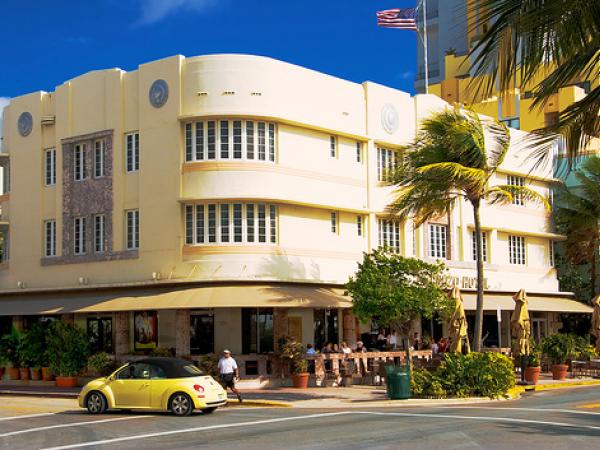
Date: 23 February 2016
Located just steps from the expansive shores of Miami Beach and its dynamic nightclubs, fashion boutiques and gourmet restaurants, the historic Cardozo hotel stands as a relic of Art Deco days past.
The jazzy styles were recreated in 1939 by architect Henry Hohauser, and despite a recent renovation project, the Cardozo has managed to preserve its original style and elegance throughout the years.
The renovation project aimed to update the interior and façade of the hotel while completely restoring its original appearance and, in accordance with the new Florida building codes, protect the historic hotel from damage during tropical storms and hurricanes.
To accomplish these goals, hurricane-resistant windows and doors made with KeepSafe Maximum glass were chosen.
Unlike other hurricane protective devices, such as shutter and plywood systems, which are often bulky and unsightly on a building’s facade, KeepSafe Maximum glass offers the same aesthetic appeal as ordinary glass and built-in around the clock protection from damage and injury during hurricanes.
.jpg)
“By using KeepSafe Maximum glass in the Cardozo’s renovations, we were able to keep the original Art Deco design intact”, says Flavio Quesada, president of Construction Glass Industries in Miami, who provided the windows. “Hurricane-resistant laminated glass was a much more effective and viable option than shutter systems because installing shutter systems would invariably have become a problem for hotel management prior to storms.”
.jpg)
Hurricane-resistant KeepSafe Maximum glass is made by bonding a tough polyvinyl butyral (PVB) plastic interlayer between two panes of glass under heat and pressure. The result is a durable glass system that may crack upon impact from a blunt object or wind-borne debris, but the fragments tend to adhere to the plastic interlayer, therefore keeping the glass intact within the frame.
During a hurricane it is essential that exterior glass surfaces of buildings, such as doors, windows and skylights are not compromised. When an exterior surface is broken and hurricane winds and rain are allowed to flow freely into a structure, the structure will not only be subject to extensive interior damage, but also the intense increase in internal pressures can literally blow out the roof and walls causing a building’s complete destruction.
After witnessing the massive devastation of homes and buildings in South Florida during Hurricane Andrew in 1992, the State of Florida implemented strict impact resistance for glazed openings in an attempt to prevent such extensive destruction from ever occurring again. The codes mandate that all exterior glass surfaces in buildings and homes be able to withstand impact from windborne debris as well as the cyclic wind pressures that occur during hurricanes. In accordance with the KeepSafe Maximum seal, windows and doors made with KeepSafe Maximum glass meet these stringent impact-resistant criteria, rendering them code-approved systems that will effectively protect homes and buildings during hurricanes. Quesada used two types of hurricane-resistant KeepSafe Maximum windows on the Cardozo - the series 238 casement windows that crank open and the series 238 fixed windows that don’t open. Both series appear the same from the outside of the building.
Another benefit that KeepSafe Maximum windows provided for the Cadozo Hotel was insulation from the street activity. With dozens of nightclubs and packaged outdoor patio bars and cafes, excessive noise permeates the leisure-dominated community.
Therefore, preserving the peace and quiet inside the hotel was essential if any guests desired an uninterrupted night’s sleep. The hardy interlayer in KeepSafe Maximum dampens the movement of sound waves, therefore significantly reducing the amount of noise that is able to penetrate a structure. KeepSafe Maximum glass is made with a tough, resilient polyvinyl butyral (PVB) plastic interlayer used in manufacturing laminated glass. The world’s leading brand of PVB, KeepSafe Maximum plastic interlayer, is sandwiched between two or more panes of glass and then permanently bonded together under heat and pressure. The result is laminated glass that provides safety, security, sound control, UV screening, protection from the effects of both natural and man-made disasters, and solutions to many architectural design problems.
.jpg)
 600450
600450





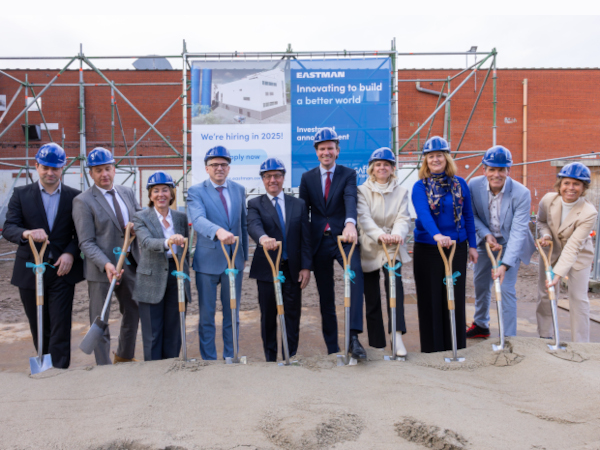










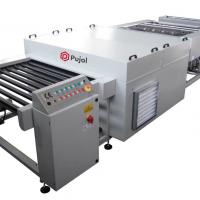

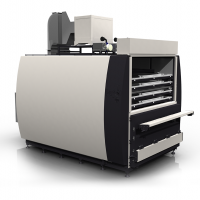
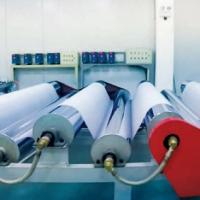

Add new comment